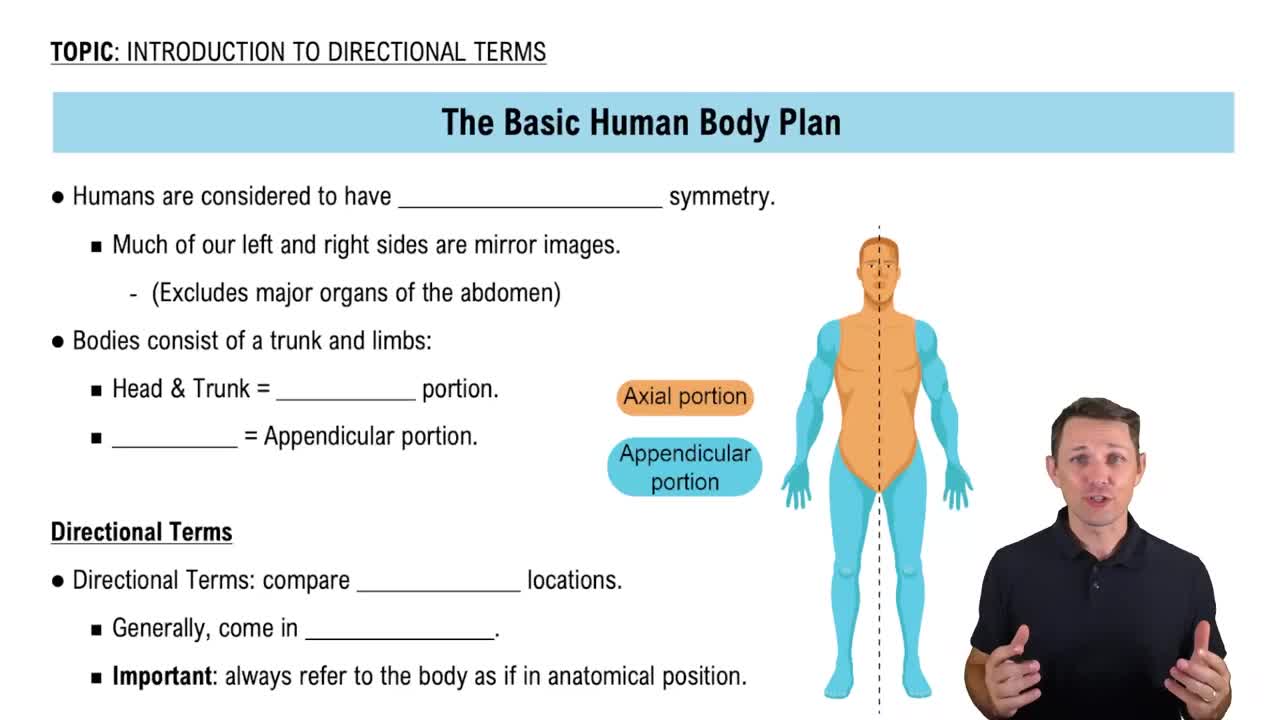Here are the essential concepts you must grasp in order to answer the question correctly.
Directional Terms
Directional terms are anatomical language used to describe the locations and relationships of body structures. They provide a standardized way to communicate about the positions of organs and tissues, such as 'distal' meaning farther from the point of attachment or trunk, and 'lateral' indicating a position away from the midline of the body.
Recommended video:
Introduction to Directional Terms
Anatomical Position
The anatomical position is a standard reference point in anatomy where the body is standing upright, facing forward, with arms at the sides and palms facing forward. This position serves as a baseline for using directional terms, ensuring clarity in describing the locations of various body parts relative to one another.
Recommended video:
Body Planes
Body planes are imaginary lines that divide the body into sections, helping to describe locations and movements. The three primary planes are the sagittal (dividing left and right), frontal (dividing front and back), and transverse (dividing top and bottom). Understanding these planes aids in visualizing the spatial relationships of body structures when using directional terms.
Recommended video:
 Elaine N. Marieb, Katja Hoehn 7th Edition
Elaine N. Marieb, Katja Hoehn 7th Edition Ch. 1 The Human Body: An Orientation
Ch. 1 The Human Body: An Orientation Problem 5
Problem 5 Verified step by step guidance
Verified step by step guidance


